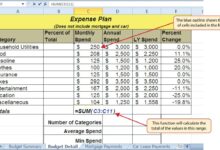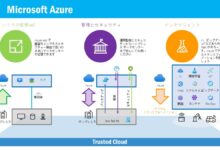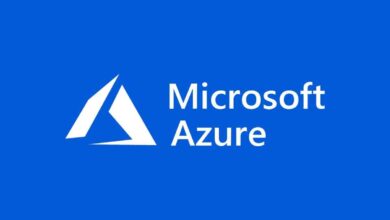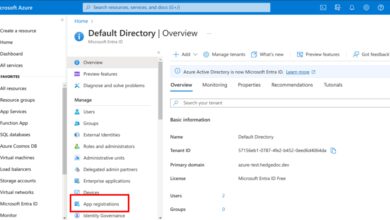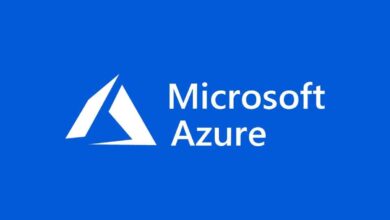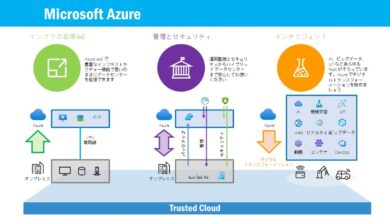Calculate Azure Costs: 7 Powerful Steps to Master Your Cloud Spending
Want to calculate Azure costs accurately and avoid billing surprises? You’re not alone. Millions of businesses use Microsoft Azure, but without proper cost management, bills can spiral out of control. This guide breaks down everything you need to know to track, analyze, and optimize your spending—step by step.
Why You Need to Calculate Azure Costs

Understanding your cloud expenses isn’t just about saving money—it’s about making smarter business decisions. When you calculate Azure costs effectively, you gain visibility into where your budget is going, identify inefficiencies, and align spending with business goals. Cloud environments are dynamic, and without proactive monitoring, you could be paying for idle resources or over-provisioned services.
Prevent Budget Overruns
One of the biggest risks of cloud computing is unexpected costs. Unlike traditional on-premises infrastructure with fixed capital expenses, Azure operates on a pay-as-you-go model. This flexibility is powerful but can lead to overspending if not monitored. By learning how to calculate Azure costs early and consistently, teams can set realistic budgets and avoid year-end financial shocks.
- Unexpected spikes in usage can double or triple monthly bills.
- Development teams might spin up test environments and forget to shut them down.
- Auto-scaling features, while useful, can increase costs during traffic surges.
According to Microsoft’s Cloud Adoption Framework, organizations that implement cost management strategies from the start reduce their cloud spend by up to 30% in the first year alone. That’s why proactive cost tracking is non-negotiable.
Improve Accountability Across Teams
When multiple departments use Azure—such as DevOps, data science, and marketing—it becomes difficult to assign responsibility for spending. By calculating Azure costs per team, project, or department, you create financial transparency. This encourages teams to be more mindful of resource usage and fosters a culture of cost-conscious innovation.
For example, tagging resources with metadata like Department=Marketing or Project=CRM-Upgrade allows finance and IT leaders to generate detailed cost reports. This level of granularity helps in justifying cloud investments during budget reviews and performance audits.
calculate azure costs – Calculate azure costs menjadi aspek penting yang dibahas di sini.
“Cost management is not just an IT issue—it’s a business imperative.” — Microsoft Azure Documentation
Key Components That Influence Azure Pricing
To calculate Azure costs accurately, you must first understand the pricing model. Azure pricing is complex because it depends on multiple variables, including service type, region, usage duration, and commitment level. Let’s break down the core components that affect your bill.
Compute Resources: VMs, Containers, and Serverless
Compute is often the largest cost driver in Azure. Whether you’re using Virtual Machines (VMs), Azure Kubernetes Service (AKS), or serverless functions like Azure Functions, each has a different pricing structure.
- Virtual Machines: Billed per second or per hour based on instance size, OS, and whether it’s pay-as-you-go or reserved.
- Containers (AKS): You pay for the underlying VMs, load balancers, and storage—not for Kubernetes itself.
- Serverless (Azure Functions): Charged based on execution time and number of executions, making it cost-effective for sporadic workloads.
For instance, a D4s v3 VM in the East US region costs approximately $0.192/hour on pay-as-you-go. Running it 24/7 for a month would cost around $138. If you reserve it for one year, you could save up to 69%. Always compare options before deployment.
Storage and Data Transfer Costs
Storage might seem cheap at first glance, but costs add up quickly when dealing with terabytes of data. Azure offers several storage tiers: Hot, Cool, and Archive, each with different access frequencies and pricing.
- Hot Tier: For frequently accessed data. Higher storage cost, lower access cost.
- Cool Tier: For infrequently accessed data. Lower storage cost, higher retrieval fees.
- Archive Tier: For long-term backups. Cheapest storage, highest retrieval latency and cost.
Data transfer is another hidden cost. While inbound data is free, outbound data (e.g., serving files to users) is charged per gigabyte. Transferring 1 TB of data out of Azure to the internet can cost $85–$100 depending on the region. Cross-region replication and peering also incur charges.
Learn more about Azure storage pricing at Microsoft’s official storage pricing page.
calculate azure costs – Calculate azure costs menjadi aspek penting yang dibahas di sini.
How to Calculate Azure Costs Using the Azure Pricing Calculator
The easiest way to estimate your cloud spending before deployment is by using the Azure Pricing Calculator. This free tool allows you to build a virtual environment and see real-time cost estimates.
Step-by-Step Guide to Using the Calculator
Follow these steps to get accurate cost projections:
- Go to https://azure.microsoft.com/en-us/pricing/calculator/.
- Add services like Virtual Machines, Blob Storage, or Azure SQL Database.
- Configure each service with your expected specs (e.g., VM size, storage capacity, region).
- Adjust usage patterns (e.g., 24/7 vs. 8 hours/day).
- Apply reserved instance discounts if planning long-term usage.
- Download or share the estimate as a PDF.
This tool is invaluable for project planning, budget approvals, and comparing cloud vs. on-premises costs. It even supports multi-region deployments and hybrid scenarios.
Real-World Example: Estimating a Web Application
Let’s say you’re deploying a web app using:
- 1 x B2s VM (Linux) – $0.041/hour
- 64 GB SSD Disk – $9.73/month
- 100 GB Blob Storage (Hot Tier) – $1.76/month
- 500 GB Monthly Data Transfer Out – $37.50
- Azure App Service (Basic Plan) – $56.67/month
Total estimated monthly cost: ~$115. This helps stakeholders understand the financial impact before writing a single line of code.
“The Azure Pricing Calculator helped us cut our initial estimate by 40% by choosing the right VM size and storage tier.” — IT Manager, Mid-Sized SaaS Company
Using Azure Cost Management + Billing Tools
While the pricing calculator gives you estimates, real-time cost tracking requires Azure’s native tools. The Azure Cost Management + Billing service is the central hub for monitoring, analyzing, and optimizing your actual spending.
calculate azure costs – Calculate azure costs menjadi aspek penting yang dibahas di sini.
Accessing Cost Data in the Azure Portal
To get started:
- Log in to the Azure portal.
- Navigate to Cost Management + Billing.
- Select your billing account or subscription.
- View the Cost Analysis dashboard to see spending trends.
You can filter costs by date range, service, resource group, or tags. This is essential when you need to calculate Azure costs for specific projects or departments.
Creating Custom Reports and Alerts
Azure allows you to create custom cost reports and set up budget alerts. For example:
- Set a monthly budget of $500 for your development team.
- Receive email alerts at 75%, 90%, and 100% of budget usage.
- Automatically trigger Azure Logic Apps or webhooks when thresholds are exceeded.
These alerts prevent runaway spending and help maintain financial discipline across teams.
Learn more about setting up budgets at Microsoft’s Budget Creation Guide.
Leverage Tags to Track and Allocate Costs
One of the most powerful ways to calculate Azure costs by project, team, or environment is through resource tagging. Tags are key-value pairs attached to Azure resources that enable detailed cost attribution.
calculate azure costs – Calculate azure costs menjadi aspek penting yang dibahas di sini.
Best Practices for Effective Tagging
To get the most out of tagging, follow these best practices:
- Use consistent naming conventions (e.g.,
Environment=Production,Owner=DevTeam-East). - Limit the number of tags to avoid complexity (5–10 per resource is ideal).
- Enforce tagging policies using Azure Policy to ensure compliance.
- Integrate tags with your CI/CD pipeline so new resources are auto-tagged.
For example, if you tag all staging resources with Environment=Staging, you can run a cost report to see exactly how much money is being spent on non-production workloads.
Generating Tag-Based Cost Reports
In the Azure Cost Analysis tool, you can group costs by any tag. This allows finance teams to generate invoices per department or charge back cloud usage to individual business units.
Imagine you have three projects:
- Project Alpha: $1,200/month
- Project Beta: $850/month
- Project Gamma: $420/month
With proper tagging, you can export this data and present it in dashboards or share it with stakeholders. This level of transparency builds trust and supports data-driven decision-making.
“After implementing a tagging strategy, we reduced unallocated costs from 35% to under 5% in three months.” — Cloud Architect, Enterprise Organization
Optimize Costs with Reserved Instances and Savings Plans
Once you’ve mastered how to calculate Azure costs, the next step is optimization. One of the most effective ways to reduce spending is by using Reserved Virtual Machine Instances (RIs) or Azure Savings Plans.
calculate azure costs – Calculate azure costs menjadi aspek penting yang dibahas di sini.
How Reserved Instances Work
Reserved Instances allow you to commit to using specific VMs for 1 or 3 years in exchange for significant discounts—up to 72% compared to pay-as-you-go pricing.
- You pay upfront or monthly for the reservation.
- The discount applies automatically to matching VM usage.
- RIs are region- and size-specific (e.g., East US, D4s v3).
For predictable, long-running workloads like databases or domain controllers, RIs are a no-brainer. Use the Recommendations tab in Cost Management to see which resources would benefit most from reservations.
Understanding Azure Savings Plans
Azure Savings Plans offer a more flexible alternative to RIs. Instead of reserving specific VMs, you commit to a certain amount of compute usage (measured in $/hour) across eligible services like VMs, AKS, and Azure Functions.
- Commit to $20/hour for one or three years.
- Discounts apply automatically to any qualifying compute usage.
- Great for teams with variable workloads or mixed instance types.
Savings Plans can deliver up to 65% savings and are easier to manage than traditional RIs. They’re ideal for organizations adopting a multi-cloud or microservices architecture.
Compare Reserved Instances vs. Savings Plans at Microsoft’s Savings Plans page.
Monitor and Forecast Costs with Azure Advisor
Azure Advisor is a personalized cloud consultant that analyzes your environment and provides actionable recommendations. It plays a crucial role in helping you calculate Azure costs and optimize spending over time.
calculate azure costs – Calculate azure costs menjadi aspek penting yang dibahas di sini.
Cost Recommendations from Azure Advisor
Azure Advisor continuously scans your resources and suggests cost-saving opportunities, such as:
- Downsizing underutilized VMs (e.g., switch from D8s to D4s).
- Deleting unattached disks or unused public IPs.
- Enabling auto-shutdown for non-production VMs.
- Purchasing reserved instances based on usage patterns.
Each recommendation includes an estimated monthly savings, making it easy to prioritize actions. For example, shutting down a development VM after business hours could save $150/month.
Using Forecasting to Predict Future Spending
Azure Cost Management includes forecasting tools that predict your future spending based on historical trends. This is invaluable for financial planning and avoiding surprises.
For instance, if your current monthly spend is $5,000 and usage is growing at 10% per month, the forecast might show $8,000 by Q4. This allows you to scale budgets, negotiate contracts, or optimize resources in advance.
Forecasts can be filtered by subscription, resource group, or tags, giving you granular insights into different parts of your organization.
“Forecasting helped us anticipate a 40% cost increase and proactively optimize resources before it happened.” — CFO, Tech Startup
Third-Party Tools to Enhance Azure Cost Management
While Azure provides robust native tools, third-party solutions offer advanced analytics, multi-cloud support, and deeper automation. These tools can help you calculate Azure costs with greater precision and integrate with existing financial systems.
calculate azure costs – Calculate azure costs menjadi aspek penting yang dibahas di sini.
Top Third-Party Cost Management Platforms
Some of the most popular tools include:
- CloudHealth by VMware: Offers real-time cost visibility, automated optimization, and compliance checks.
- Azure Cost Management by Apptio: Provides enterprise-grade cost allocation and showback/chargeback reporting.
- Spot by NetApp: Specializes in Kubernetes cost optimization and automated resource scaling.
- Datadog Cloud Cost Management: Integrates cost data with performance monitoring for holistic insights.
These platforms often provide AI-driven recommendations, custom dashboards, and integration with ERP systems like SAP or Oracle.
When to Use External Tools vs. Native Azure Features
Native Azure tools are sufficient for most small to mid-sized organizations. However, if you have:
- Multiple cloud providers (AWS, GCP, Azure)
- Complex chargeback models
- Need for advanced automation or machine learning-based insights
…then a third-party tool may be worth the investment. Evaluate based on your organization’s scale, complexity, and financial governance needs.
Explore CloudHealth’s Azure cost management features at cloudhealthtech.com.
Common Mistakes When Trying to Calculate Azure Costs
Even experienced teams make mistakes when calculating Azure costs. Avoiding these pitfalls can save you thousands of dollars and countless hours of troubleshooting.
calculate azure costs – Calculate azure costs menjadi aspek penting yang dibahas di sini.
Ignoring Idle or Orphaned Resources
One of the most common issues is leaving unused resources running. Examples include:
- VMs spun up for testing and never deleted.
- Unattached managed disks still being billed.
- Public IP addresses with no associated VM.
These “zombie” resources can account for 15–30% of total cloud spend. Use Azure Advisor or third-party tools to identify and remove them regularly.
Over-Provisioning Without Monitoring
It’s tempting to over-provision resources “just to be safe.” But a D8s VM running at 10% CPU utilization is a waste of money. Always start small, monitor performance, and scale up only when needed.
Enable Azure Monitor and set up alerts for CPU, memory, and disk usage. This data helps you right-size VMs and avoid unnecessary costs.
Failing to Use Reservations or Savings Plans
Many organizations stick with pay-as-you-go pricing even for stable, long-term workloads. This can cost 50% more than using reservations. Review your usage patterns quarterly and purchase reservations for predictable workloads.
“We saved $42,000 in one year just by buying reservations for our production databases.” — Cloud Engineer, Financial Services Firm
Best Practices for Ongoing Azure Cost Optimization
Calculating Azure costs isn’t a one-time task—it’s an ongoing process. To maintain control over your cloud spending, adopt these best practices:
calculate azure costs – Calculate azure costs menjadi aspek penting yang dibahas di sini.
Establish a Cloud Center of Excellence (CCoE)
A CCoE is a cross-functional team responsible for cloud governance, security, and cost management. It ensures that cloud adoption is aligned with business goals and financial constraints.
- Define cloud usage policies and cost allocation models.
- Conduct regular cost reviews and optimization sprints.
- Provide training for developers and finance teams.
Automate Cost Controls
Use Infrastructure-as-Code (IaC) tools like Terraform or ARM templates to enforce tagging, budget limits, and auto-shutdown rules. Automation reduces human error and ensures consistency across environments.
You can also use Azure Policy to block resource creation without required tags or prevent deployment in high-cost regions.
Review and Adjust Monthly
Set a recurring calendar event to review your Azure bill, analyze cost trends, and implement optimizations. Treat cloud spending like any other operational expense—monitor it, question it, and improve it.
Monthly actions should include:
- Reviewing budget alerts and investigating overages.
- Checking Azure Advisor recommendations.
- Updating reservations based on changing workloads.
- Reporting cost savings to leadership.
Consistency is key to long-term cost efficiency.
calculate azure costs – Calculate azure costs menjadi aspek penting yang dibahas di sini.
How do I calculate Azure costs for my project?
You can calculate Azure costs using the Azure Pricing Calculator. Input your expected resources (VMs, storage, bandwidth), configure specs and usage patterns, and the tool will generate a real-time estimate. For actual spending, use Azure Cost Management + Billing in the Azure portal to analyze costs by subscription, resource group, or tags.
What is the best way to reduce Azure costs?
The most effective ways to reduce Azure costs include using Reserved Instances or Savings Plans for long-term workloads, right-sizing underutilized resources, deleting idle or orphaned resources, enabling auto-shutdown for non-production VMs, and implementing a tagging strategy for cost allocation.
Does Azure offer free tools to track spending?
Yes, Azure provides free tools like the Azure Pricing Calculator for estimates and Azure Cost Management + Billing for real-time cost tracking, budgeting, and reporting. These tools are accessible through the Azure portal and require no additional cost.
calculate azure costs – Calculate azure costs menjadi aspek penting yang dibahas di sini.
How can I forecast future Azure costs?
Azure Cost Management includes forecasting features that predict future spending based on historical usage trends. You can view forecasts in the Cost Analysis dashboard, filtered by subscription, resource group, or tags, helping you plan budgets and avoid surprises.
Are third-party tools better than Azure’s native cost management?
Third-party tools like CloudHealth or Spot by NetApp offer advanced features for multi-cloud environments, deeper automation, and enterprise-grade reporting. However, for most organizations, Azure’s native tools are sufficient and cost-effective. Use third-party solutions if you need advanced analytics or manage multiple clouds.
Learning how to calculate Azure costs is essential for any organization leveraging Microsoft’s cloud platform. From using the Azure Pricing Calculator to leveraging Cost Management tools, implementing tagging strategies, and optimizing with reservations, every step contributes to greater financial control. By avoiding common mistakes and adopting best practices like automation and monthly reviews, you can turn cloud spending from a liability into a strategic advantage. The cloud offers incredible flexibility—but only if you manage it wisely.
calculate azure costs – Calculate azure costs menjadi aspek penting yang dibahas di sini.
Further Reading:
